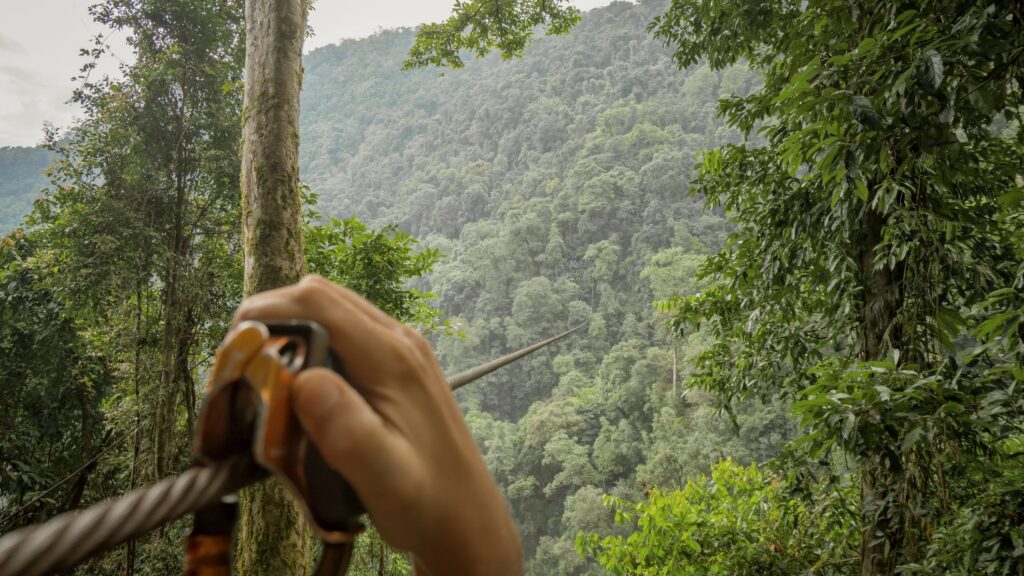Is the tree shaking, or am I? Peeling my arm off the tree trunk and examining my hand revealed I was indeed the unsteady party. I pressed my face against the rough bark and steeled my nerves. I was going to team build if it killed me. Relying on my stubbornness to outweigh my fear, I clung to my harness and inched forward, following my coworkers across the tightrope.
When my boss first suggested Go Ape—a treetop obstacle course—as a team-building activity, I thought she was kidding. To someone with a strong fear of heights, climbing across ropes while harnessed in treetops is something you do when you need to remind yourself of your own mortality, not strengthen your bond with coworkers.
It turns out she was not kidding, as I soon found myself coming to terms with both my fears and my willingness to share that with coworkers. I enjoy neither physical discomfort nor emotional vulnerability, so I was in quite the professional pickle.
Before starting, I gave myself a few rules and goals: First and foremost, I would not need to be rescued from the trees like a very angry ginger cat. If children can complete this, so can I. Second, I would disguise all screams as thrilled squeaks of delight instead of terror-filled exclamations. There’s no need to alarm anyone as I stared death in the face. And finally, most importantly, I would avoid injuring myself at all costs. This would not turn into the time we team lifted Mel onto a stretcher.
Fortunately, I met all three goals, coming away with only bumps and bruises, and lessons about teamwork. My boss had cleverly found a great activity that reached each of us a little differently. But why is teambuilding even important? Was this excursion merely an excuse for my fearless boss to play in the trees?
Building a team through extracurriculars
Despite the eye-rolling stigma associated with the term, teambuilding is an important part of creating a healthy work environment. Multiple studies have shown teambuilding to be instrumental in establishing relationships, helping coworkers succeed, sharing credit, increasing transparency, and strengthening communication.
With many of us spending more time with coworkers than family members, it’s important to strengthen team bonds to see increased engagement. A 2019 survey found that most employees would actually like to see monthly teambuilding, whether that be a potluck, an outing, or a volunteer day. In reality, most only see one activity a quarter.
Remember that teambuilding doesn’t need to involve trust falls and ice breaker questions. Happy Hour events, March Madness celebrations, and group learning opportunities all help coworkers bond and see each other in a new light. PRC’s fall summit in Tulsa, for example, presents an excellent opportunity for a small team to travel together, spend a day learning, and then explore the Tulsa Zoo—our gracious host for the summit. By encouraging employees to take advantage of any out-of-the-box career experience, healthcare leaders not only demonstrate an investment in their employee engagement, but also a dedication to cultivating an educated and proactive workforce.
After spending a few hours in the trees, I can’t say I’m clamoring to be the next Tarzan (or Jane). But I can say I walked away with a stronger relationship with everyone on my team, a happier attitude toward both my employer and my job itself, and (once the fear wore off) decreased stress. All in all, I’d return to the trees, though I would still probably suggest we try for something a little lower to the ground next time.
Sources and further reading:
The Cost of Team-Building Is Much Lower than Not Having a Team

